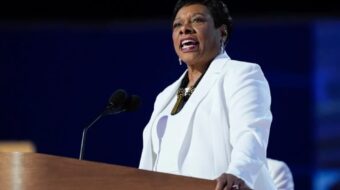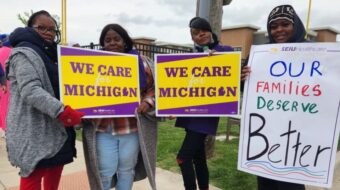OAKLAND, Calif. – Employing a dynamic multi-prong approach that reached 2.8 million non-union voters in addition to 2 million union members, California’s labor movement was the game-changer in the state’s Democratic election sweep.
Rebecca Greenberg, the California Labor Federation’s communications organizer, reported on the federation’s website that organized labor combined direct union member-to-member contact, public actions, airing of TV ads, and targeted outreach to non-union voters in multiple languages – both through its own structures and labor-supported independent expenditures campaigns.
Art Pulaski, the labor federation’s executive secretary-treasurer, credited the “grassroots campaigning” with “unparalleled intensity” by nearly 30,000 union volunteers aware of the high election stakes in which Republicans openly attacked “working people’s ideas” and their unions.
Except for the still-to-be decided state attorney general’s race, Democrats took all statewide races, including the offices of governor and state insurance commissioner previously in Republican hands.
In the congressional and state legislative races the two major parties ended up with the same number of seats as before, with Democrats having the majority in both cases.
Mike Garcia, spearheading SEIU’s “Cambiando (Changing) California” campaign that targeted Latinos, said labor’s election activities were “the most unified, cooperative and strongest effort I have ever experienced.”
Pooling their resources, two or more unions teamed up to take responsibility for different pieces of what was one single overall thrust.
During the summer, labor-supported independent expenditure efforts combined to reach key constituencies with TV ads and through targeted communication to voters, singling out Meg Whitman, the multi-billionaire Republican gubernatorial candidate, who by election night would spend a record $180 million.
At the same time, labor launched several media-grabbing public actions wherever she would appear publicly, tagging her as “Queen Meg.”
These labor initiatives are credited with holding down Whitman’s poll numbers during the summer before Jerry Brown, her Democratic opponent with far less cash on hand, unleashed his campaign in September when voters start paying closer attention.
On Labor Day, the labor movement fully launched its multi-pronged offensive.
The unions reached out to their members by phone, at their homes and work-sites.
Through the “Million More Voters” micro-targeting program to non-union voters, labor focused on the rural Central Valley and urban Inland Empire, “swing areas of the state,” as well as with key groups like blue-collar workers, Latinos and Asian Americans.
“It has helped us really understand a big portion of the electorate who are working class people but who are not our members,” said Pulaski referring to the micro-targeting program that the federation used for the first time in this election.
Micro-targeting, or direct marketing data-mining techniques, is nowadays being used with increased frequency by election campaigns to identify and track potential supporters.
Employing message research techniques, sophisticated Internet outreach, targeted phoning and mailing, and member-to-member contact, labor reached a record 4.8 million union and non-union voters – in English and Spanish, and in four Asian languages.
While not by itself, this approach combined with TV ads aired by labor-backed independent expenditure campaigns contributed to the advantage Brown had over Whitman among Latino voters, which went from 14 points on Labor Day to 34 points on Election Day, and to high overall Latino turnout.
By election night Brown would trounce his opponent by 13 points and U.S. Senator Barbara Boxer defeated her opposition by 9 points. Both remained neck and neck with their Republican counter-parts during the earlier campaigning.










